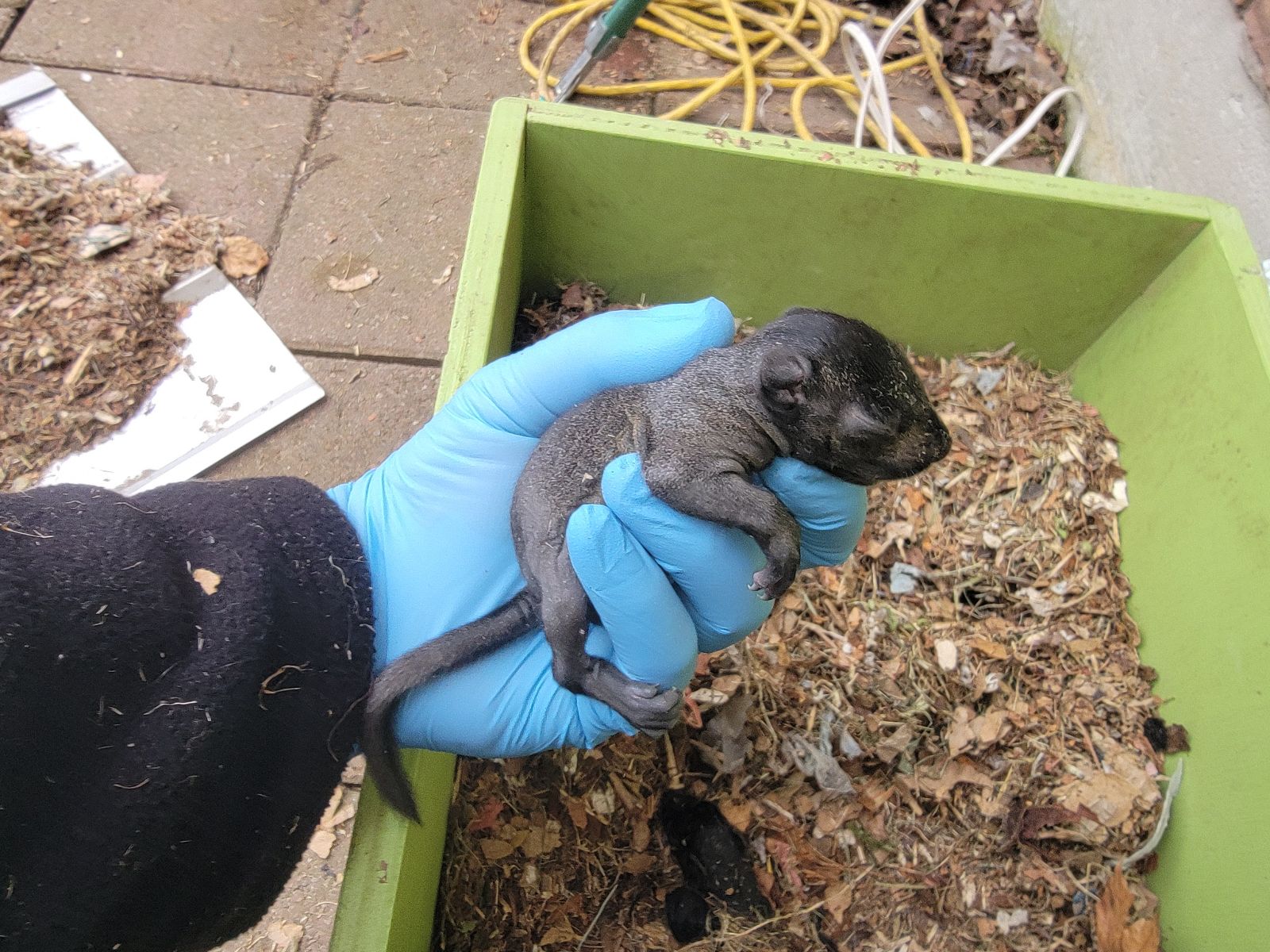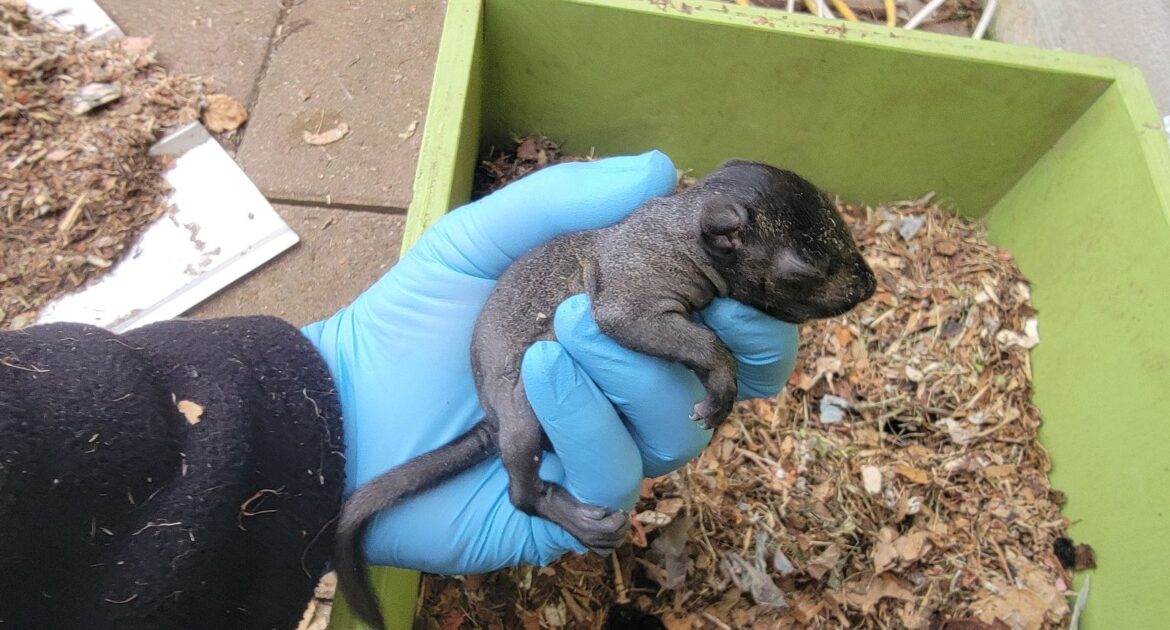Keeping squirrels out of your home might seem like a challenge, but the solution begins right in your yard. Squirrel-proofing with tree trimming is one of the smartest and easiest ways to protect your property. Trees provide squirrels with a natural highway, and any branches that hang over your roof create the perfect launch pad into your house.
Prevent squirrels with tree maintenance by trimming back overhanging limbs and maintaining a safe distance between your trees and home. This simple step can help block one of their common entry points, making tree trimming to protect the home not just a good idea but an essential move for homeowners.
Squirrels are incredibly persistent, especially when colder months push them to seek warmth and shelter. Overgrown trees make it even easier for them to find a way into your home’s cozy spaces, like the attic. Trimming also helps spot potential nesting activity before it becomes a bigger problem. At Skedaddle Humane Wildlife Control in Scarborough, we understand how tree maintenance plays a crucial role in squirrel-proofing efforts.
From reducing wildlife access to preserving the overall safety of your property, tree trimming is more than yard work; it’s a defence strategy. Throughout this article, you’ll learn how proper tree care can help secure your home, increase safety, and even improve your property’s value.
Why Tree Trimming Matters
Trees add beauty and value to any property, but when left unchecked, they can become a liability. Overgrown branches aren’t just a risk to your house during storms; they’re also a favourite tool for squirrels looking to bypass traditional barriers. If they can jump from a branch straight onto your roof, they no longer need to climb up walls or find other harder routes.
Here’s why regular tree maintenance is crucial for squirrel-proofing your home:
- Reduced Access: By trimming branches that overhang your roof or walls, you remove easy pathways squirrels use to invade your space.
- Fewer Hiding Spots: Dense, untrimmed trees offer perfect nesting spots for squirrels, often leading them closer to your house. Trimming reduces these hiding spots and relocates squirrel activity farther away from your home.
- Prevents Damage: Large tree branches can damage roofs or siding if they break off during storms. Even worse, they give animals a chance to exploit damaged areas to enter your home.
Common Problems Overgrown Trees Create
Still not sure why trimming should be a priority? Here are some real problems that overgrown trees can create when left unmaintained.
- Roof Damage: Overhanging branches can scrape shingles or tiles, weakening your roof and providing potential entry points for squirrels.
- Easier Access to Ventilation Openings: If squirrels can reach vents or eaves, they’ll have no trouble chewing their way into your attic.
- Clogged Gutters: Leaves and debris from untrimmed trees can clog gutters, creating water damage over time. This moist environment sometimes attracts smaller animals looking for a drink.
Clearly, overgrown trees can cause more than just squirrel issues. Keeping them trimmed is one of the easiest ways to protect your home from wildlife and structural problems all at once.
How Trimming Complements Professional Squirrel-Proofing
While tree trimming is a major preventative measure, it works best when paired with other squirrel-proofing solutions. Removing branches alone won’t stop squirrels if your home already has weak spots. That’s where professional support from Skedaddle Humane Wildlife Control comes into play.
We use one-way door systems to humanely remove squirrels from your home. These innovative doors allow squirrels to exit your attic or walls but prevent them from re-entering the same space. Once they’re out, we seal off potential entry points and recommend tree maintenance to prevent future invasions.
This comprehensive approach ensures long-term protection. Trimming helps minimize the risk, while professional squirrel-proofing blocks determined animals from finding new ways in.
How Far Should Trees Be from Your Home?
When planning tree trimming to protect your home, aim to keep a clear distance of at least 3 to 4 metres between branches and your roof. This gap makes it almost impossible for squirrels to leap directly onto your home.
If you’re unsure whether trees on your property pose a risk, a professional inspection can help. Wildlife control experts can identify vulnerable areas and give specific advice on which branches need trimming. It’s all about strategically limiting access points without over-pruning or harming the tree’s health.
Other Ways Tree Trimming Helps Protect Your Home
Tree trimming doesn’t just keep squirrels at bay. It also protects your home in several other ways. Here are some additional benefits of maintaining your trees properly.
Protects Property Value
Your home’s exterior makes the first impression on anyone visiting or even just passing by. Trimming plays a huge role in keeping your yard neat and attractive. Overgrown trees with sprawling branches can make your property look untidy, which can lower your home’s curb appeal. On the flip side, well-trimmed trees make a yard look polished and cared for, showing pride in your property.
Additionally, maintenance helps the trees themselves stay healthy. Dead or diseased branches can take away from the beauty of a tree and even lead to its decline. Regular trimming removes these problem areas, allowing the tree to flourish and contribute to the overall look of your yard. An attractive property with healthy trees can increase its value if you decide to sell. Buyers see trimmed trees as a sign of a well-maintained home, which could make your property more appealing on the market.
Improves Safety
Overgrown or loose branches can become a serious hazard. During storms, heavy winds, rain, or snow can cause these branches to snap and fall. This can damage your roof, windows, or vehicles parked nearby. Worse, falling branches can injure people or pets in your yard. Keeping your trees trimmed removes weak and unstable branches before they become a problem.
Large branches that lean over your home are especially concerning. If they break during bad weather, the damage to your roof could be extensive and costly. Trimming prevents these risks, safeguarding your home and family. Even in calm weather, overgrown trees can grow into power lines, leading to electrical issues or, in rare cases, fires. Regular trimming ensures your trees don’t come into contact with utility lines, keeping your property safe.
Helps Spot Other Animals
Wildlife often makes its home in trees, and while this can be natural and harmless when far from your house, it grows concerning when it gets too close. Overgrown or dense trees can hide nests or hives for squirrels, raccoons, birds, and even bees or wasps. These creatures might seem fine at first, but the closer their nests are to your home, the greater the chance they’ll try to move inside for warmth or find food supplies.
When you trim your trees, it’s easier to spot activity like nests or burrows early on. This extra visibility allows you to take steps to deter animals before they become a problem. For example, a trimmed tree can discourage squirrels from nesting too close to your roof, reducing the likelihood that they’ll find a way into your attic. Trimming also makes it harder for insects to use decaying branches as breeding grounds. Healthy, well-pruned trees minimize pests in your yard, which can benefit your home overall.
The Risks of Skipping Tree Maintenance
Neglecting tree trimming might seem like no big deal at first, but it can lead to costly problems over time. For one, squirrels often take advantage of roof damage caused by overgrown branches. If branches aren’t trimmed, these weak points can go unnoticed until wildlife has already made its way into your home.
Overgrown trees also encourage nesting activity. When branches get too close to your house, squirrels and other animals are more likely to settle in. Once a nest is built near your roof, it’s only a matter of time before they find a way inside.
On top of that, neglecting maintenance can end up costing you more money down the road. Preventative care is much more affordable than fixing structural damage caused by wildlife or fallen branches. Scarborough homeowners understand how frustrating wildlife problems can be, which is why keeping up with tree trimming is a smart and essential step in protecting your property.
Trust the Pros for Squirrel-Proofing
DIY methods to prevent squirrels with tree maintenance often fall short. Squirrels are persistent and resourceful creatures, and without the right expertise, you can’t fully protect your home. Professional wildlife control services like Skedaddle Humane Wildlife Control offer the tools and experience needed to solve squirrel problems for good.
Aside from trimming, here’s what we do to keep squirrels out of your home successfully:
- Comprehensive Inspections: We check every part of your home’s exterior for vulnerabilities, including vents, rooflines, and soffits.
- Humane Exclusion Techniques: Our one-way doors allow squirrels to leave your home but block them from returning.
- Sealing Entry Points: After removal, we ensure all openings are sealed to keep your home secure long-term.
Combining these strategies with regular tree maintenance creates a solid defence system against squirrels.
Keep Your Home Squirrel-Free
Squirrel-proofing with tree trimming is one of the smartest steps you can take to protect your home from wildlife damage. By prioritizing regular tree maintenance, you reduce the risk of invasions and preserve the health of your property for years to come.
If you suspect squirrels are already in your home or want expert advice on preventing future issues, Skedaddle Humane Wildlife Control in Scarborough is here to help. Request an estimate today and take the first step toward a safe, squirrel-free home!




